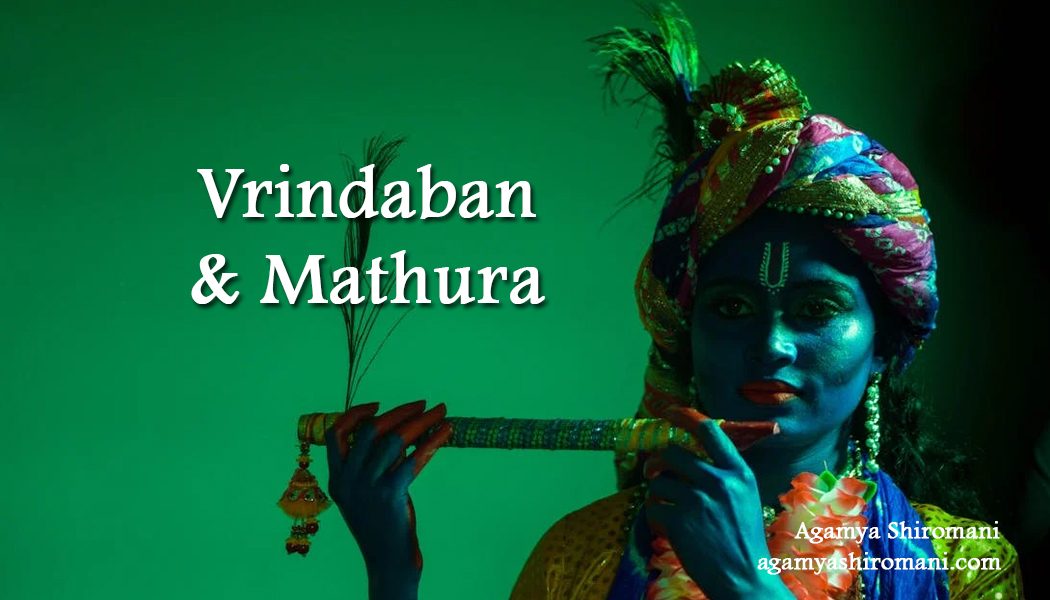Vrindaban and Mathura are two ancient cities in the Indian state of Uttar Pradesh, deeply connected to the life and legends of Lord Krishna, a central figure in Hinduism. These cities are important pilgrimage destinations for followers of the Vaishnavism tradition. Their rich cultural, spiritual, and historical significance makes them a fascinating subject of exploration.
Historical and Cultural Context
Mathura is a historic city with roots tracing back over 2,500 years. It is situated on the banks of the Yamuna River and has been a significant center for trade, culture, and religion. Mathura is considered the birthplace of Lord Krishna, a key deity in Hinduism who is believed to have been born here in a prison cell during the Dvapara Yuga, as narrated in the Bhagavata Purana and other texts. The city’s importance is further highlighted by its mention in ancient scriptures, including the Mahabharata and the Puranas.
Vrindaban, located approximately 15 kilometers from Mathura, is intimately associated with the early years of Krishna’s life. It is revered as the place where Krishna spent his childhood and performed many of his divine leelas (pastimes). Vrindaban is situated on the banks of the Yamuna River and is characterized by its numerous temples, sacred groves, and traditional village atmosphere.
Major Attractions and Temples in Mathura
- Krishna Janmabhoomi Temple: This is one of the most significant pilgrimage sites in Mathura. It is believed to be the birthplace of Krishna, and the temple complex is built over the cell where Krishna was born. The temple’s architecture reflects a blend of traditional and contemporary styles, with a central shrine dedicated to Krishna. The site also includes a mosque, the Shahi Eidgah, which was constructed by Mughal Emperor Aurangzeb on the ruins of the original temple.
- Dwarkadhish Temple: This temple is dedicated to Krishna in his form as the Lord of Dwarka. It is renowned for its beautiful architecture and the rich cultural heritage it represents. The temple’s intricate carvings and paintings depict various episodes from Krishna’s life, and it attracts thousands of devotees annually.
- Vishram Ghat: Located on the banks of the Yamuna River, this sacred ghat is believed to be the place where Krishna rested after slaying Kansa, the tyrant king. Pilgrims come here to take a ritual bath in the holy river, which is believed to wash away sins and purify the soul.
- Raja Maheshwari Temple: This lesser-known temple is dedicated to the goddess Maheshwari, a form of Durga. It is known for its peaceful ambiance and beautiful surroundings, making it a serene spot for worship and reflection.
- Gita Mandir: Dedicated to the Bhagavad Gita, this temple is situated near the Krishna Janmabhoomi Temple. It is an important center for the study and recitation of the Gita, with inscriptions of its verses adorning the temple walls.
Major Attractions and Temples in Vrindaban
- Banke Bihari Temple: This is one of the most popular temples in Vrindaban, dedicated to Krishna in his form as Banke Bihari. The temple is renowned for its vibrant and lively atmosphere, with its unique tradition of offering Darshan (viewing) of Krishna’s deity in a standing posture. The temple’s intricate artwork and its annual festivals attract numerous devotees.
- Radha Raman Temple: Established by Gopala Bhatta Goswami, a prominent follower of Chaitanya Mahaprabhu, this temple is dedicated to Krishna in his form as Radha Raman. The temple is known for its ancient deity, which is considered to have self-manifested. It is a center for devotional music and is known for its serene and spiritual atmosphere.
- Iskcon Vrindaban (Sri Krishna-Balaram Mandir): Part of the International Society for Krishna Consciousness (ISKCON) movement, this temple complex is one of the most prominent in Vrindaban. It was established by A.C. Bhaktivedanta Swami Prabhupada, the founder of ISKCON. The temple is known for its elaborate festivals, including the famous Radha Ashtami and Janmashtami celebrations. The temple complex also includes a guesthouse, a restaurant, and a Vedic library.
- Radha Kund and Shyam Kund: These sacred ponds are located in the vicinity of Vrindaban and are associated with the divine leelas of Krishna and Radha. According to legend, Krishna and Radha performed many of their divine pastimes near these ponds. Pilgrims visit these sacred waters for ritual bathing and to seek blessings.
- Prem Mandir: This relatively new temple was inaugurated in 2012 and is dedicated to Radha and Krishna. The temple is known for its stunning marble architecture and beautifully crafted sculptures depicting various episodes from Krishna’s life. The temple’s grand design and serene environment make it a significant modern addition to Vrindaban’s sacred sites.
Festivals and Cultural Events
Both Mathura and Vrindaban are renowned for their vibrant festivals, which attract pilgrims and tourists from around the world. Some of the most prominent festivals include:
- Janmashtami: Celebrating the birth of Lord Krishna, Janmashtami is one of the most significant festivals in both Mathura and Vrindaban. The event is marked by elaborate decorations, devotional singing and dancing, and reenactments of Krishna’s life. Devotees fast and engage in night-long vigils, culminating in the celebration of Krishna’s birth at midnight.
- Holi: The festival of colors, Holi, is celebrated with great enthusiasm in Vrindaban. Known for its unique tradition of playing with colors, Holi in Vrindaban is a lively and joyous event, with devotees singing devotional songs and participating in playful color fights. The celebrations in Vrindaban are renowned for their exuberance and spiritual fervor.
- Radha Ashtami: This festival marks the birth of Radha, Krishna’s divine consort. It is celebrated with special pujas, devotional singing, and community gatherings. The festival highlights the importance of Radha in Krishna’s life and the deep bond between them.
- Rath Yatra: This festival involves the procession of Krishna’s chariot through the streets of Vrindaban. The chariot is decorated with flowers and driven by devotees who sing and dance along the route. The Rath Yatra is a grand spectacle and a major event in Vrindaban’s cultural calendar.
- Govardhan Puja: This festival commemorates Krishna’s lifting of the Govardhan Hill to protect the villagers from torrential rains. The celebration involves the preparation of special offerings and the worship of Govardhan Hill, symbolizing Krishna’s divine protection.
Spiritual Significance
The spiritual significance of Mathura and Vrindaban extends beyond their historical and cultural attractions. These cities are considered the heart of Krishna devotion, embodying the principles of bhakti (devotion) and spiritual surrender. The legends and teachings associated with Krishna’s life in these places emphasize the ideals of divine love, righteousness, and the importance of living a life dedicated to spiritual principles.
Mathura symbolizes the divine birth and the beginning of Krishna’s earthly leelas. It represents the start of a journey of divine love and spiritual awakening. The temples and ghats of Mathura are integral to the pilgrimage experience, offering devotees a chance to connect with Krishna’s early life and his divine presence.
Vrindaban, on the other hand, epitomizes the essence of Krishna’s divine playfulness and the deep devotional love shared between Krishna and Radha. The sacred groves, temples, and kunds (sacred ponds) of Vrindaban are considered to be imbued with Krishna’s divine energy. The city’s serene atmosphere and the devotion of its inhabitants create a unique environment for spiritual practice and devotion.
Preservation and Challenges
While Mathura and Vrindaban are celebrated for their spiritual and cultural heritage, they also face challenges related to preservation and modernization. Rapid urbanization, environmental issues, and the influx of tourists can put pressure on these ancient cities. Efforts are being made to balance development with the preservation of the cities’ historical and spiritual significance.
Conclusion
Vrindaban and Mathura are more than just historical and cultural landmarks; they are vibrant centers of spiritual life and devotion. They offer a glimpse into the divine pastimes of Krishna and embody the principles of bhakti that have inspired countless devotees over centuries. Whether through the sacred temples, the lively festivals, or the serene ghats and kunds, these cities continue to be a source of inspiration and devotion for people from all walks of life. Their enduring legacy is a testament to the profound impact of Krishna’s teachings and the timeless appeal of the divine leelas associated with these sacred lands.




